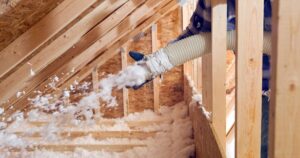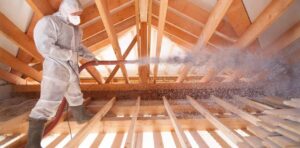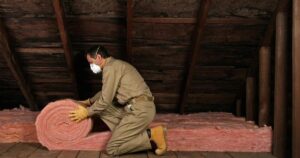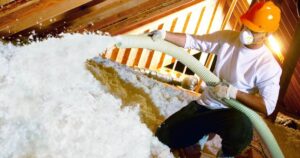When it comes to keeping your home comfortable and energy-efficient, one area that often gets overlooked is the ceiling. Most homeowners focus on insulating their walls and floors, but insulating your ceiling can be just as important. Whether you don’t have an attic or it’s inaccessible, insulating your ceiling can make a significant difference in your home’s energy efficiency.
In this article, we’ll explore how to insulate a ceiling without an attic, step by step, so you can enjoy a more comfortable living space and lower energy bills.
Understand the Benefits of Ceiling Insulation
Before delving into the process of insulating your ceiling, it’s essential to understand why this step is crucial. Insulating your ceiling can:
- Enhance Energy Efficiency
A well-insulated ceiling can help keep your home warmer in winter and cooler in summer, reducing your energy consumption and costs.
- Improve Comfort
Insulation prevents temperature fluctuations, creating a more comfortable living environment year-round.
- Reduce Noise
Insulating the ceiling can also act as a sound barrier, keeping unwanted noises from above at bay.
- Prevent Moisture Issues
Insulation can help control condensation and moisture problems, preserving the integrity of your home’s structure.
Choose the Right Insulation Material
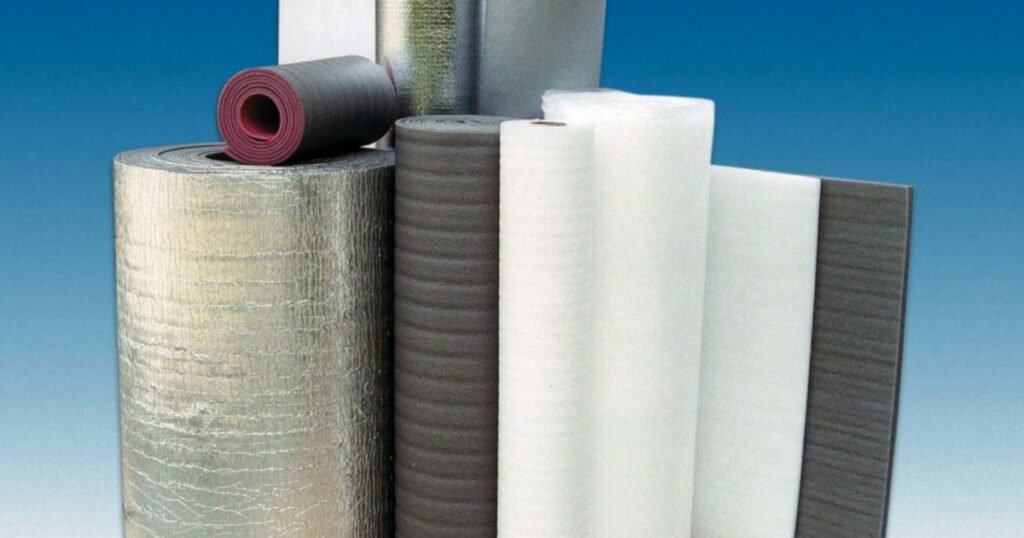
Selecting the appropriate insulation material is crucial for the success of your project. The most common options for ceiling insulation include:
- Fiberglass Batt Insulation
Easy to install, this type of insulation comes in rolls or batts and provides excellent thermal resistance.
- Spray Foam Insulation
Ideal for irregularly shaped ceilings, spray foam creates an airtight seal and offers high R-values.
- Blown-In Insulation
Made from cellulose or fiberglass, this insulation type is perfect for hard-to-reach areas and provides good coverage.
- Reflective Foil Insulation
This type of insulation reflects heat away, making it an excellent choice for hot climates.
Measure and Prepare
Before you start insulating your ceiling, measure the area accurately. Remove any existing insulation if necessary and ensure the ceiling is clean and dry.
Seal Air Leaks
Check for any gaps or cracks in the ceiling and seal them with caulk or foam to create an airtight barrier. This step is essential to maximize energy efficiency.
Install Insulation
Now it’s time to install the chosen insulation material. Follow the manufacturer’s instructions carefully. For fiberglass batts, unroll them and fit them snugly between the joists. For spray foam or blown-in insulation, use the appropriate equipment to evenly distribute the material across the ceiling.
Pay Attention to Safety
When installing insulation, don’t forget safety measures. Wear protective gear, including gloves, a mask, and eye protection. Adequate ventilation is also crucial when working with insulation materials.
Consider Adding a Vapor Barrier
In humid climates, it’s a good idea to add a vapor barrier to prevent moisture from penetrating the insulation. Consult with a professional if you’re unsure about the need for a vapor barrier.
Test for Effectiveness
After insulating the ceiling, it’s a good practice to test for insulation effectiveness. You can do this by monitoring energy bills and assessing the comfort level in your home.
Maintain Your Ceiling Insulation
Regular maintenance is essential to ensure your ceiling insulation remains effective. Check for signs of damage, and if needed, make necessary repairs or replacements.
Additional Tips for Success
- Professional Help
While it’s possible to insulate your ceiling on your own, sometimes it’s best to consult with a professional. They can provide expert advice on insulation types, and R-values, and ensure the job is done correctly.
- Local Building Codes
Always check your local building codes and regulations regarding insulation. Compliance is essential to ensure your safety and the longevity of your project.
- Consider Eco-Friendly Options
If you’re environmentally conscious, consider eco-friendly insulation materials such as recycled denim or cellulose insulation, which are both effective and sustainable.
- Enhance Energy Efficiency Further
To maximize your energy savings, consider other energy-efficient home improvements like upgrading your windows and doors or investing in a smart thermostat.
- Regular Inspections
Schedule periodic inspections of your ceiling insulation to identify and address any issues promptly. Early intervention can save you money and prevent major problems down the line.
FAQs
Can I insulate my ceiling from the inside?
If the attic is also a living space, it is strongly advised to insulate the roof as well. This can either be done from the outside or from the inside of the roof. A flat roof that is insulated on the inside (through the ceiling of the rooms), is called a ‘cold roof’.
Is it better to insulate the ceiling or roof?
Attic insulation will save you the most money initially since the insulation is in the ceiling plane, which is the first layer of insulation between your home’s temperature and the temperature outdoors.
What is the best way to insulate a flat roof?
Polyisocyanurate: This material is the most popular flat roof insulation option. It is closed-cell foam, achieving a high R-value, even for minimal thickness. You may need that thinness if you’re working with an existing flat roof with little space.
What is the best material for roof insulation?
Insulate roof: possibilities, suitable insulation materials. In the case of a cold roof, mineral wool such as glass wool or rock wool is frequently chosen. Insulation boards are a possibility too. If you decide to have the flat roof insulated on the outside, installers will use a pressure-resistant insulation material.
Final Thoughts
Insulating your ceiling without an attic is a valuable investment in your home’s comfort, energy efficiency, and overall well-being. By following these steps, you can effectively insulate your ceiling and reap the benefits of lower energy bills, reduced noise, and increased comfort. Remember that the choice of insulation material, proper installation, and regular maintenance are key factors in ensuring long-term success.
Insulating your ceiling is an investment that not only pays for itself through lower energy bills but also contributes to a greener, more comfortable future for you and your family. So, why wait? Start insulating your ceiling without an attic and experience the difference for yourself. Your home will thank you, and so will your wallet.


